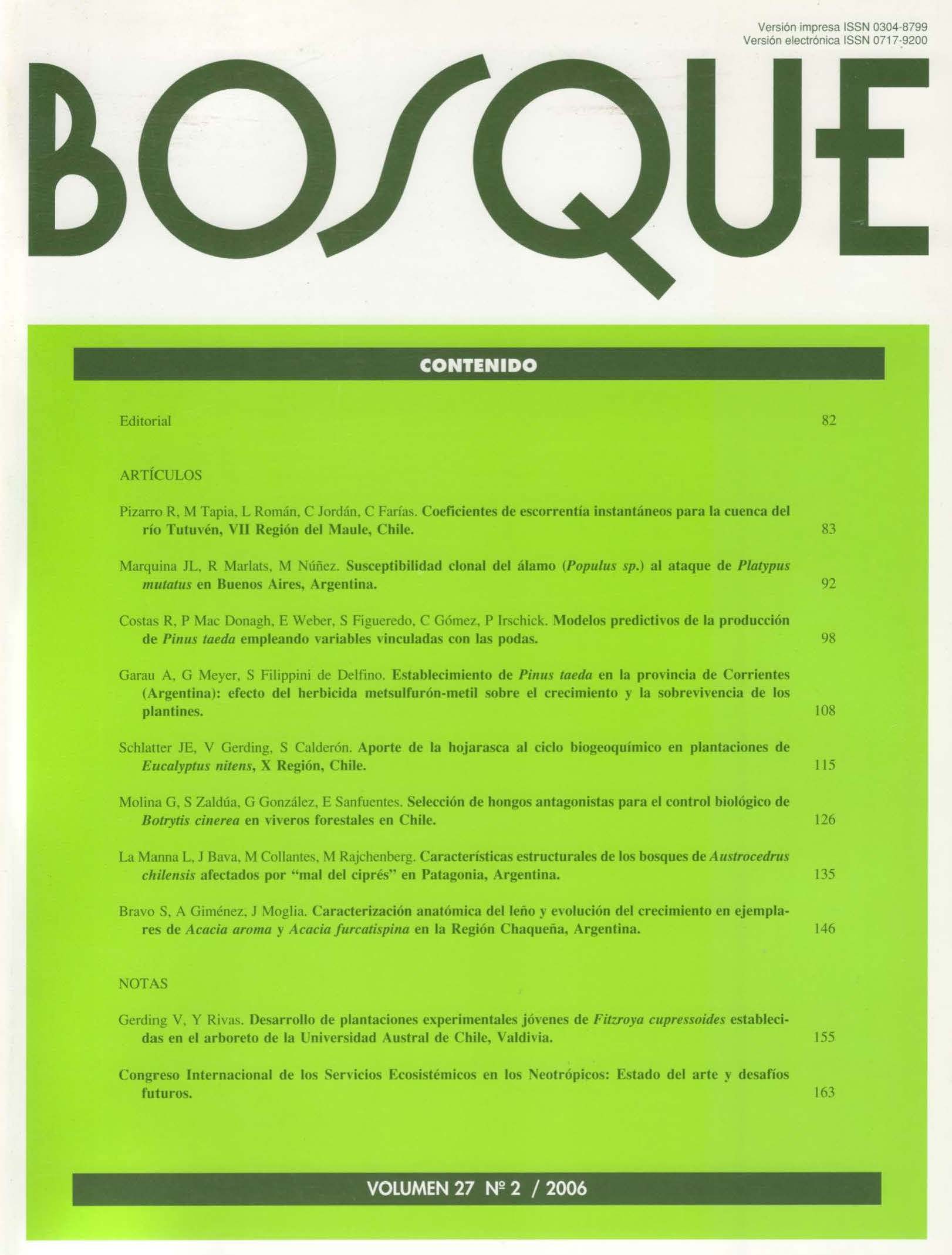Main Article Content
Aug 31, 2006
Abstract
Based on data from an experience in a Pinus taeda plantation, including ages between 4 and 7 years old, multiple linear regressions were adjusted to obtain stand yield functions including regression variables associated with prunes intensity and opportunity, besides age, stand density and site index. The response variables analyzed were quadratic mean diameter, basal area and volume per hectare. The results show that it was possible to improve the prediction quality and accuracy of models of basal area when prune variables are considered, with respect to equations without these variables and with statistical significance. Improvements of 9.19% of the standard residual error and 8.99% of the statistics indicator employed to compare the prediction capacity were obtained. The utilization of some of those functions like sub-models inside equations of quadratic mean diameter and volume by hectare, simple and with good statistics, gives results that are sensitive to prune. These functions could be employed in spreadsheets to decide when and how many green branches to prune in relation to the production objective. The obtained models appear interesting for developing new local growth simulation programs of Pinus taeda that include prunes applied in intensive silvicultural systems of forest production.


